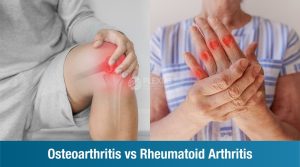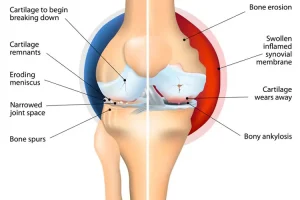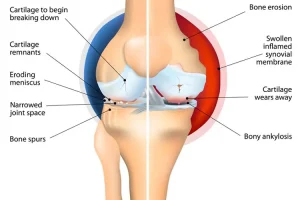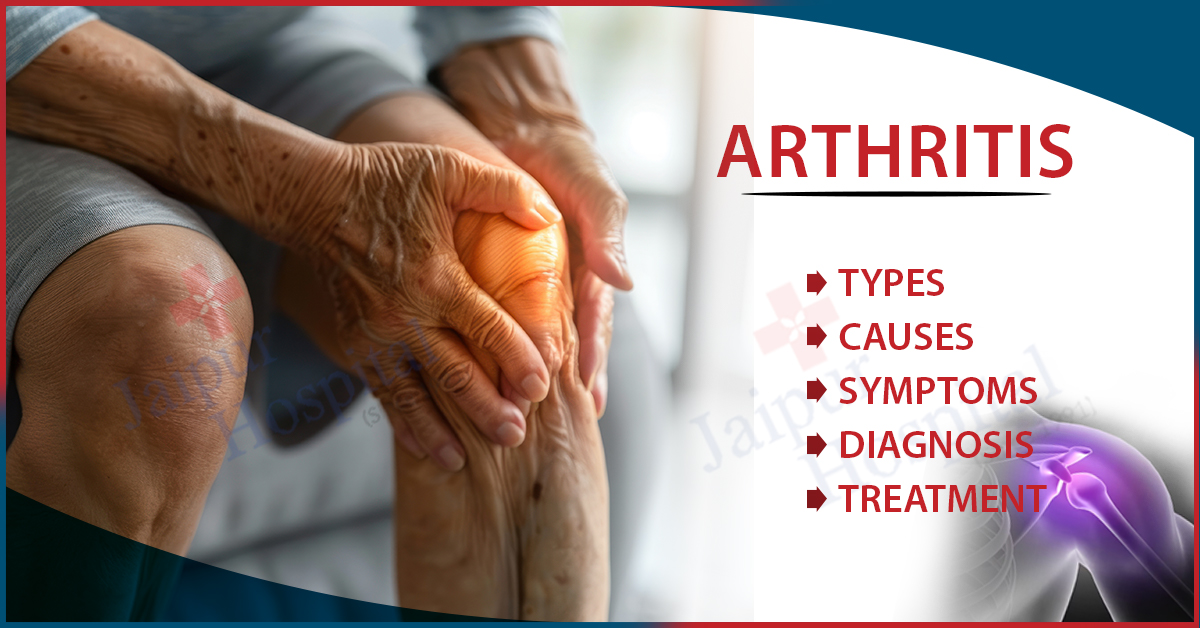
Understanding Arthritis Pain in Winter: Symptoms and Management
Winter can be a challenging season for people living with arthritis, as cold, damp weather often exacerbates joint pain and stiffness. The reduced physical activity during colder months can also contribute to discomfort. Here’s a detailed look at the symptoms, reasons behind the increased pain, and effective strategies for managing arthritis during winter.
Why Does Arthritis Pain Worsen in Winter?
- Barometric Pressure Changes: Drops in barometric pressure can lead to the expansion of joint tissues, increasing pressure and pain in sensitive areas.
- Cold Temperatures: Low temperatures can cause muscles and ligaments to stiffen, leading to restricted movement and heightened discomfort.
- Reduced Physical Activity: People tend to be less active in colder months, which can weaken muscles around the joints and make them less supportive.
- Seasonal Depression: Shorter days and limited sunlight exposure may lead to seasonal affective disorder (SAD), which can amplify the perception of pain.
Common Symptoms of Arthritis in Winter
- Increased joint stiffness, especially in the morning.
- Swelling and inflammation in affected joints.
- Persistent pain, even during rest.
- Reduced range of motion in the joints.
- A sensation of cold or numbness in hands and feet.
Tips to Manage Arthritis Pain in Winter
1. Stay Warm
- Dress Appropriately: Layer up with warm clothing, gloves, and socks. Use thermal wear for extra insulation.
- Keep Your Home Warm: Use space heaters, heating pads, or electric blankets to maintain a cozy indoor temperature.
- Warm Baths and Showers: Take warm baths or use a hot water bottle to soothe sore joints.
2. Regular Exercise
- Low-Impact Activities: Swimming, yoga, and tai chi are excellent options to keep your joints active without adding stress.
- Stretching: Incorporate gentle stretching exercises to maintain flexibility and reduce stiffness.
- Indoor Workouts: Consider using a stationary bike or treadmill if outdoor exercise isn’t feasible.
3. Stay Hydrated
- Proper hydration keeps cartilage healthy and reduces joint stiffness. Don’t let the cold weather make you forget to drink water.
4. Eat Anti-Inflammatory Foods
- Omega-3 Fatty Acids: Found in salmon, walnuts, and flaxseeds, these can reduce inflammation.
- Fruits and Vegetables: Incorporate colorful fruits and vegetables like berries, spinach, and sweet potatoes.
- Turmeric and Ginger: Add these spices to your meals or tea for their natural anti-inflammatory properties.
5. Use Heat and Cold Therapy
- Heat Therapy: Apply heating pads, warm compresses, or soak in warm baths to improve blood flow and reduce stiffness.
- Cold Therapy: Use ice packs to reduce swelling and numb acute pain.
6. Stay Active Indoors
- Engage in hobbies like dancing, gardening, or light home chores to keep moving and boost mood.
7. Physical and Massage Therapy
- Regular sessions with a physical therapist can help strengthen muscles around the joints and improve mobility.
- Gentle massages can promote relaxation and relieve pain.
8. Medication and Supplements
- Over-the-Counter Pain Relievers: Nonsteroidal anti-inflammatory drugs (NSAIDs) like ibuprofen can help manage pain.
- Supplements: Glucosamine, chondroitin, and vitamin D may help support joint health, but consult your doctor before use.
9. Mental Health Support
- Practice mindfulness or meditation to manage pain perception.
- Engage in activities that boost mood, like spending time with loved ones or pursuing a hobby.
10. Consult Your Doctor
- If your symptoms worsen, seek medical advice. Your doctor might adjust your treatment plan, prescribe stronger medications, or recommend therapies like cortisone injections.
Home Remedies for Winter Arthritis Pain
- Epsom Salt Soaks: Add Epsom salt to warm water and soak your joints for 15-20 minutes.
- Essential Oils: Massage with essential oils like eucalyptus or lavender to promote relaxation and ease pain.
- Herbal Teas: Sip on teas made with turmeric, ginger, or green tea to reduce inflammation.
Prevention Tips for Future Winters
- Begin a tailored exercise program in autumn to build joint resilience before winter arrives.
- Invest in ergonomic tools or supportive footwear to reduce joint strain.
- Plan your meals to include plenty of anti-inflammatory foods throughout the year.
Takeaway
Winter can intensify arthritis pain, but proactive measures can help you manage symptoms effectively. By staying warm, maintaining an active lifestyle, eating nutritious foods, and consulting healthcare professionals, you can reduce the impact of cold weather on your joints. Remember, small, consistent changes to your routine can make a big difference in managing arthritis and enjoying the winter months.
Arthritis Symptoms and Causes
Arthritis refers to the inflammation of one or more joints, leading to pain, stiffness, and other debilitating symptoms. It is not a single disease but rather a term that encompasses over 100 different types of joint disorders, including osteoarthritis and rheumatoid arthritis. Below is a detailed look at its symptoms and causes.
Common Symptoms of Arthritis
While the symptoms can vary depending on the type of arthritis, some general signs include:
1. Joint Pain
- The most common symptom of arthritis.
- Pain may range from mild to severe and can worsen with movement or during specific times of the day (e.g., morning).

2. Joint Stiffness
- Especially noticeable upon waking up or after long periods of inactivity.
- Makes it difficult to move the joint freely.
3. Swelling
- Inflammation in the joint area due to excess fluid or thickened joint lining.
- Swelling may feel warm and tender to the touch.
4. Redness
- Affected joints may appear red due to increased blood flow to the inflamed area.
5. Decreased Range of Motion
- Difficulty bending, flexing, or rotating the joint.
- Movements may feel restricted or painful.
6. Fatigue
- Common in autoimmune forms of arthritis like rheumatoid arthritis.
- May be accompanied by a general feeling of unwellness.
7. Joint Deformity
- Over time, severe arthritis can lead to visible changes in joint shape, especially in rheumatoid arthritis.
8. Bone Spurs
- In osteoarthritis, bony growths may develop at the edges of joints, leading to pain and reduced flexibility.
9. Other Systemic Symptoms (Specific to Rheumatoid Arthritis)
- Fever.
- Weight loss.
- Eye inflammation.
- Dry mouth or other symptoms indicating involvement of other body systems.
Common Types of Arthritis and Their Causes
1. Osteoarthritis (OA)
- Cause: “Wear and tear” on the cartilage, which cushions the ends of bones.

- Risk Factors:
- Aging.
- Obesity.
- Joint injuries or overuse.
- Genetics.
2. Rheumatoid Arthritis (RA)
- Cause: An autoimmune condition where the body’s immune system attacks the joint lining (synovium).
- Risk Factors:
- Genetic predisposition (family history).
- Smoking.
- Hormonal factors (more common in women).
3. Psoriatic Arthritis
- Cause: Another autoimmune condition that often accompanies psoriasis (a skin disorder).
- Risk Factors:
- Family history of psoriasis or arthritis.
- Obesity.
4. Gout
- Cause: Build-up of uric acid crystals in the joint.
- Risk Factors:
- High purine diet (e.g., red meat, seafood).
- Alcohol consumption.
- Kidney dysfunction.
- Genetics.
5. Ankylosing Spondylitis
- Cause: Chronic inflammation primarily affecting the spine.
- Risk Factors:
- Genetic marker HLA-B27.
- Young males are more commonly affected.
6. Juvenile Arthritis
- Cause: Autoimmune or inflammatory conditions affecting children under 16.
- Risk Factors:
- Exact causes are unclear, but genetics may play a role.
7. Infectious (Septic) Arthritis
- Cause: Bacterial, viral, or fungal infection that spreads to the joints.
- Risk Factors:
- Open wounds.
- Joint surgery.
- Compromised immune system.
Other Contributing Factors to Arthritis
1. Age
- Risk increases with age due to cartilage degeneration.
2. Genetics
- A family history of arthritis can predispose individuals to certain types.
3. Gender
- Women are more likely to develop rheumatoid arthritis, while men are more prone to gout.
4. Obesity
- Extra body weight puts stress on weight-bearing joints, such as knees and hips.
5. Previous Injuries
- Injuries from sports, accidents, or repetitive joint stress can increase the risk of developing arthritis later.
6. Lifestyle Factors
- Smoking and lack of exercise can exacerbate symptoms and increase the risk of inflammatory arthritis.
When to See a Doctor
If you experience any of the following symptoms persistently, it’s important to consult a healthcare provider:
- Pain or stiffness lasting longer than two weeks.
- Swelling and redness in a joint.
- Difficulty moving the joint or performing daily activities.
- Unexplained fever or fatigue accompanying joint pain.
Conclusion
Arthritis is a complex condition with a variety of symptoms and causes. Early diagnosis and treatment are crucial to managing the disease and improving quality of life. Understanding the specific type of arthritis you have and its underlying causes can help in creating an effective treatment plan, including lifestyle adjustments, medications, and physical therapy.



 DailyMediCure
DailyMediCure 









